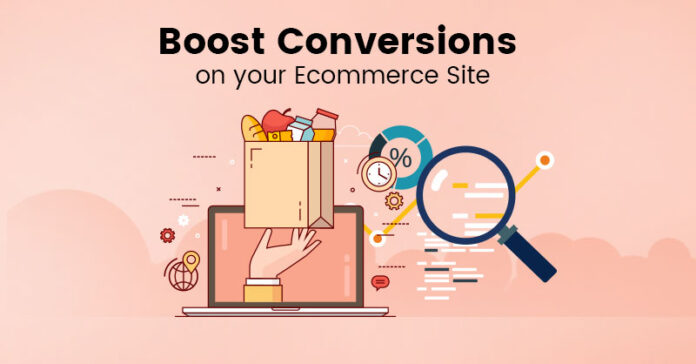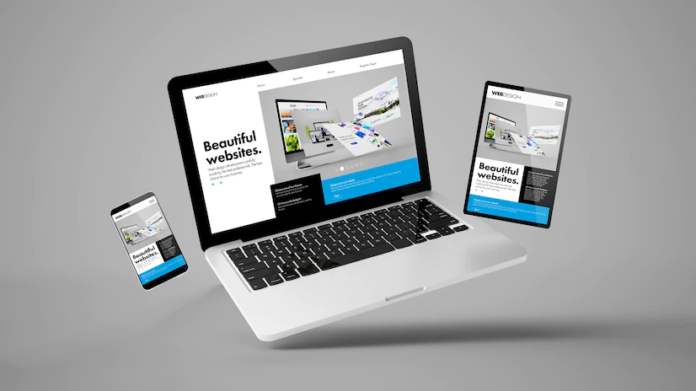In an era marked by rapid digital evolution, web design has emerged as a vital aspect of successful e-commerce. Web design is not merely about creating aesthetically pleasing layouts; it’s about building an effective digital platform that empowers businesses to connect with their customers, showcase their products, and streamline their operations. In the e-commerce context, good design should facilitate a seamless shopping experience, simplifying navigation and making it easier for customers to find and purchase what they want.
Successful e-commerce relies on web design to provide a seamless user journey, from product discovery to checkout. Your site design should convey your brand’s identity and values, fostering trust and rapport with your customers. In addition, intuitive navigation, seamless checkout processes, mobile compatibility, and fast load times are all essential aspects of e-commerce web design that impact the overall user experience, directly influencing sales and conversions.
User Experience (UX) and Its Impact on E-commerce Success

User experience, often abbreviated as UX, is a crucial element of Web design Cyprus that greatly affects e-commerce success. A positive user experience facilitates customer engagement, encourages repeat visits, and ultimately drives conversions and sales.
From the customers’ perspective, a good e-commerce site is intuitive, easy to navigate, and offers an effortless shopping experience. It should have a clear layout, logical flow, and easy-to-use interface. Features like quick search, filter options, detailed product descriptions, and user reviews can enhance UX and encourage customers to make a purchase.
UX also extends to the checkout process, where a simple and secure transaction process can dramatically increase the likelihood of conversion. A complicated checkout process, on the other hand, is one of the leading causes of cart abandonment. Designing a simple, secure, and quick checkout process is therefore integral to successful e-commerce.
Designing a Responsive and Mobile-Friendly E-commerce Site
With an increasing number of customers browsing and shopping on their mobile devices, a responsive, mobile-friendly design has become a non-negotiable aspect of e-commerce web design. A responsive site automatically adjusts its layout and elements to fit the user’s screen size, ensuring optimal viewing and interaction experience, regardless of the device used.
Mobile optimization goes beyond mere responsiveness. It also involves ensuring fast load times on mobile devices, creating a touch-friendly interface, and designing for shorter mobile sessions. A truly mobile-friendly e-commerce website should offer the same features and functionality as its desktop counterpart, but in a layout that is intuitive and accessible on a smaller screen.
Visual Appeal and Branding
Web design is a powerful tool for establishing and conveying your brand’s identity. The visual elements of your e-commerce website, including colors, fonts, images, and layout, should reflect your brand’s personality, values, and unique selling propositions.
Visual appeal is not just about aesthetics; it plays a significant role in attracting and retaining customers. A visually pleasing site can create a positive impression, engender trust, and motivate customers to explore your products. Moreover, consistent branding across your website strengthens brand recognition and helps create a memorable shopping experience.
Navigation and Usability: Key Factors for E-commerce Conversion

A well-designed navigation system is critical for a successful e-commerce website. It guides customers through your site, helping them find what they’re looking for and understand what you’re offering. Good navigation should be intuitive, logical, and consistent across all pages of your site.
Usability, on the other hand, refers to how easily users can interact with your website. An e-commerce site with high usability is easy to understand and use, minimizing user errors and frustration. This involves clear labeling, consistent design elements, easy-to-use search, and filter options, and an efficient checkout process.
Optimizing Performance for E-commerce Success
Website performance, particularly speed, significantly impacts user experience and search engine ranking. Slow load times can frustrate customers, causing them to leave and potentially never return. In fact, Google found that as page load time goes from one to three seconds, the probability of bounce increases by 32%.
Performance optimization strategies include optimizing images and other media files, using caching and Content Delivery Networks (CDN), minimizing HTTP requests, and implementing lazy loading. Such strategies ensure faster load times, improve user experience, and subsequently, boost e-commerce conversions.
Integrating Payment Gateways and Security Measures in Web Design

A variety of payment options and robust security measures are crucial components of a successful e-commerce website. Offering multiple payment options can improve customer convenience, boost conversions, and enhance the overall shopping experience. The design should seamlessly integrate these options into the checkout process.
Implementing stringent security measures is equally important. SSL certificates, two-factor authentication, firewall settings, and data encryption can safeguard customer data and instill trust in your website. Transparency about these security measures can further enhance customer trust and loyalty.
Streamlining the Checkout Process
The checkout process is where sales are finalized, and hence, it’s an area where good design can significantly impact e-commerce conversions. Streamlining the checkout process means minimizing barriers to sales, making it as straightforward as possible for customers to complete their purchases.
This includes eliminating unnecessary steps, providing clear instructions and feedback, offering guest checkout options, and simplifying form filling. Additionally, the design should communicate security, build customer trust, and reduce cart abandonment rates.
Leveraging Web Design to Enhance Product Display and Merchandising

Web design plays a pivotal role in product display and merchandising. High-quality images, 360-degree views, video demonstrations, and detailed product descriptions can create a virtual shopping experience that mimics the physical one.
In addition, effective e-commerce web design can facilitate upselling and cross-selling strategies. By cleverly positioning related products, bundles, or premium versions, you can subtly encourage customers to increase their purchase value.
The Role of SEO and Web Design in Driving Ecommerce Traffic and Sales
Lastly, SEO is a critical consideration in e-commerce web design. SEO-friendly design boosts your site’s visibility on search engines, driving organic traffic and potential sales. This involves optimizing site structure, URL structure, page titles, meta descriptions, and alt text for images.
Moreover, content is a crucial SEO factor that intertwines with web design. Regularly updated blogs, guides, and product information provide value to customers, keep them engaged, and improve your site’s search engine ranking.
Conclusion
In conclusion, web design and e-commerce are two essential components of any successful business. By understanding the connection between them, we can develop effective strategies to increase our online presence and build bridges that will lead us to success. Through careful planning and implementation, your business can benefit from a well-designed website that offers customers an intuitive shopping experience while generating valuable leads for your business.









